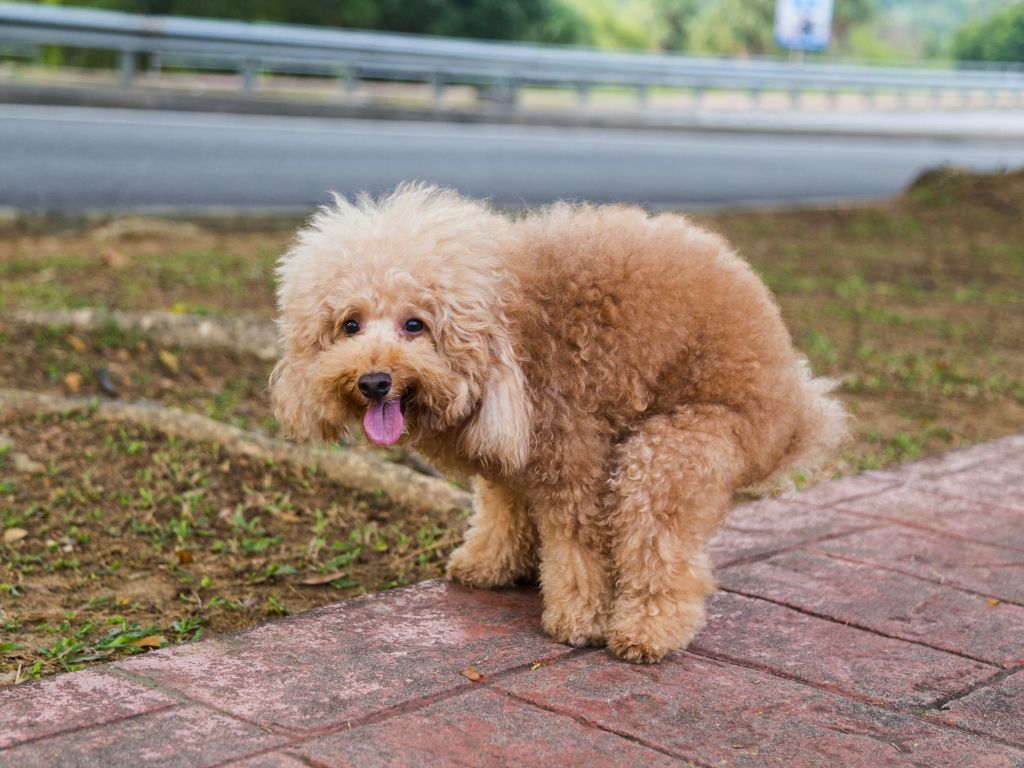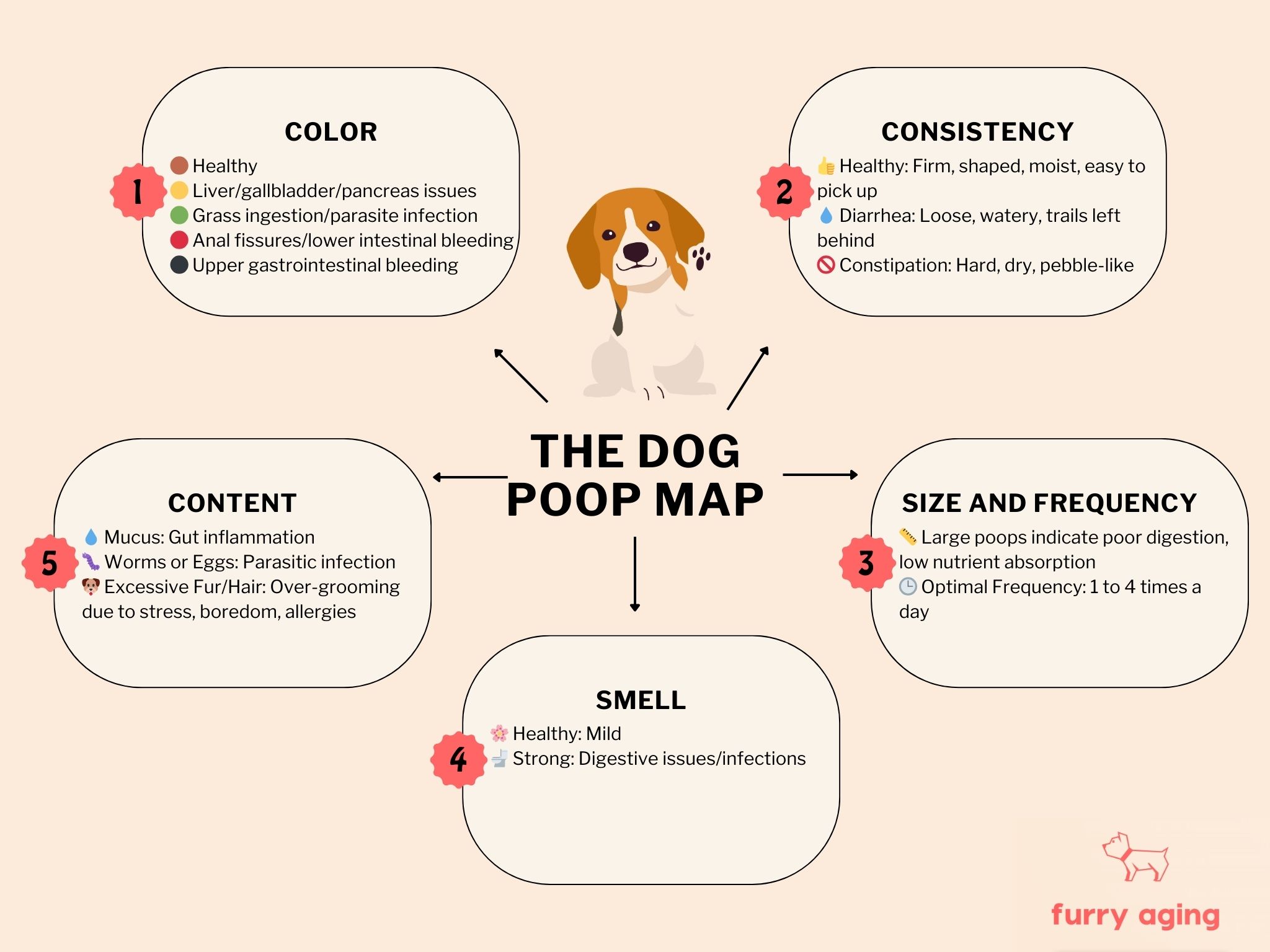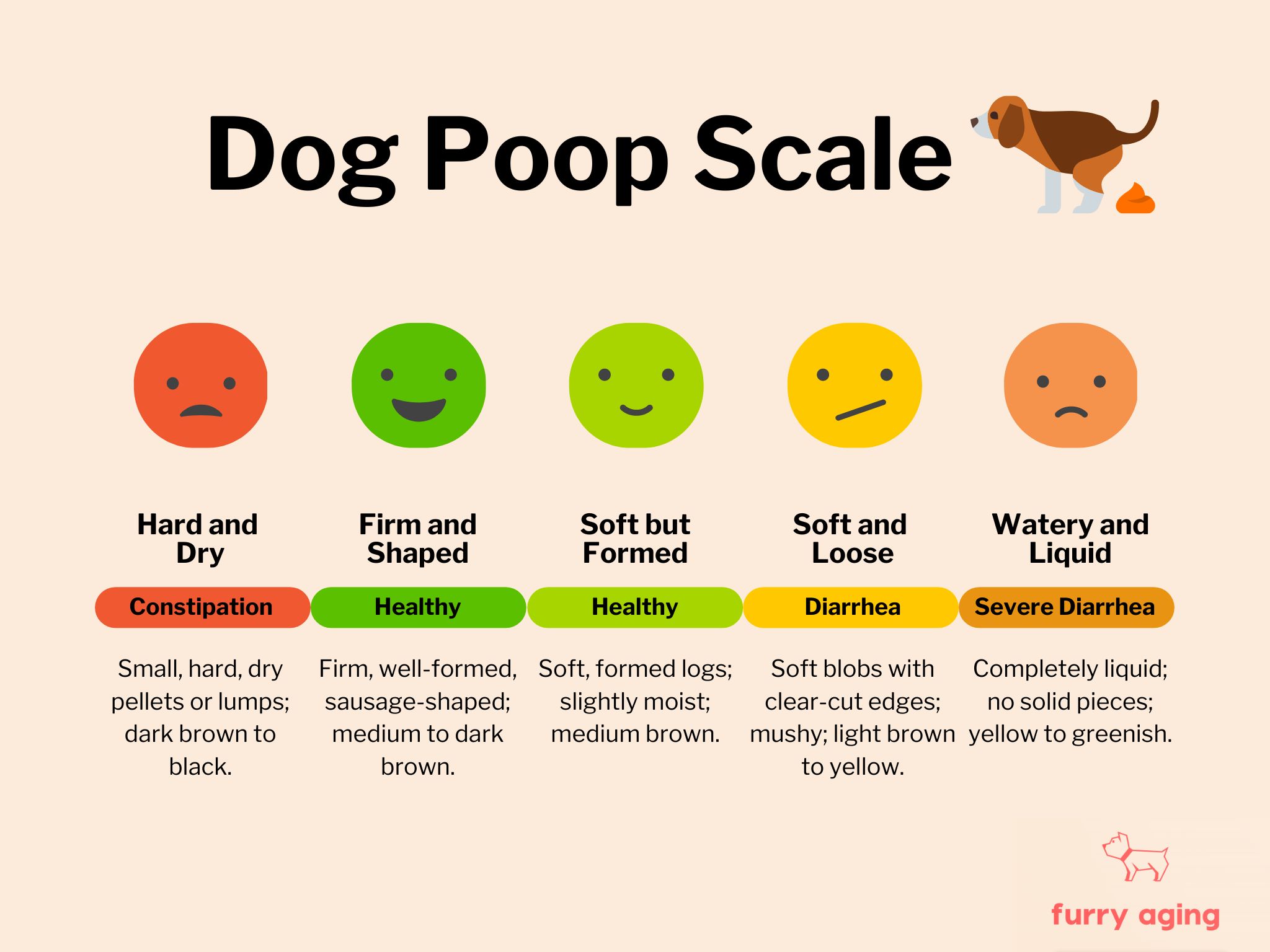
An unusual poop can be concerning but doesn’t necessarily mean your dog is in danger or sick—especially if they are behaving normally and not showing any signs of pain.
I remember when my dog had black poop. Knowing this could indicate internal bleeding, I immediately went into alert mode. However, it turned out to be just an excess of iron in his diet. We adjusted his food, and everything returned to normal. The unnecessary panic lasted only a day.
Many pet owners have similar stories. Here’s what you need to pay attention to when you’re concerned about your dog.
What does a healthy dog poop look like?
Healthy poop is expected to be brown, solid with a defined shape, not too hard or dry, easy to pick up and proportionate to the amount of food the dog ate. Healthy poop indicates that the digestive system is working properly and absorbing the right amount of nutrients.
Let’s see what factors should we consider in determining if the poop is healthy or not:
Color
- Brown: It is a sign that your dog is healthy and everything works as it should.
- Yellow: This might indicate a problem with the liver, gallbladder, or pancreas.
- Green: This could mean that your dog has been eating a lot of grass, or it might be a parasite infection.
- Bright red: Can be due to anal fissures, or bleeding in the lower intestines or colon.
- Black: Generally, it is a sign of bleeding in the upper gastrointestinal tract.
Consistency
- Optimal: Stools that are firm and shaped, moist but not watery, and easy to pick up without leaving traces.
- Diarrhea: It is loose or watery poop, and leaves a trail when you pick it up. Diarrhea can be caused due to infections, dietary changes, stress, parasites, medication side effects, or chronic inflammation.
- Constipation: Hard and dry stools, pebble-like, cracks in the surface, and your dog seems to be having difficulties. This is generally caused by dehydration or lack of fiber.
Size and Frequency
Large poops often indicate that the food isn’t being digested properly, therefore the amount of nutrients absorbed is low. This typically happens when consuming low-quality ingredients, such as meat by-products, corn, wheat, artificial preservatives, artificial colors, rendered fat, or vegetable oils.
Regarding the frequency, between 1 to 4 times a day is considered normal, but it can vary depending on the dog’s:
- Size and age
- Diet and amount of food intake
- Activity level and exercise routine
- Overall health
Smell
Poop has a smell, even healthy ones, but it shouldn’t be overwhelming. Strong smells can be due to digestive issues or infections.
Content
- Excessive mucus can be a sign of gut inflammation.
- Worms or eggs are clear signs of parasitic infection.
- Excessive fur or hair can indicate excessive grooming, potentially due to stress, boredom, or allergies.
- If you consistently see undigested food, it could be a sign of digestive tract disease or infection.

The Dog Poop Scale

What should I do if I notice abnormal dog poop?
Call the vet if you notice:
- Black stools, accompanied by a foul smell, signs of pain, or weight loss.
- Bright red blood in stools, persistent over different bowel movements, accompanied by signs of pain, lethargy, or diarrhea.
- Your dog is straining or unable to poop.
- The poop contains foreign objects like plastic, rocks, etc.
- Visible worms or eggs.
- Weird poops and accompanied by other concerning symptoms like vomiting, lethargy, loss of appetite, pain, or weight loss.
Observe at home when:
- There is a single streak of bright red blood, but no other symptoms.
- The poop has a mucus coating, which can happen during diet transitions.
- The color is slightly off (green from eating grass, orange/yellow) but your dog seems otherwise normal.
- The consistency is soft or a little loose, but your dog is acting fine.
Call the vet after 24-48 hours when:
- Diarrhea or soft/loose stools persist for more than 2 days.
- Hard, dry pebble-like stools continue, indicating dehydration/constipation.
- You see no improvement in poop abnormalities like color, coating, or consistency.
Common Causes of Abnormal Dog Poop
- Gastrointestinal problems like colitis, or gastroenteritis.
- Bacterial, viral, or parasite infections.
- Chronic conditions such as pancreatitis, liver disease, chronic inflammatory bowel disease, or cancer in the digestive tract.
- Food allergies or intolerance.
- Diet changes.
- Medication side effects.
How to Prevent Abnormal Dog Poop
- Stick to a balanced and consistent diet.
- Avoid feeding your dog with table scraps.
- Ensure they have access to fresh and clean water all day.
- Walk them daily to promote normal bowel movement.
- Have your vet check for worms.
- Monitor food intolerance or allergies.
Whistle Poop Scan: How to keep track of your dog’s poop?
Whistle Smart Collar is a device that monitors dogs’ activity and health and tracks their real-time location. The device connects with your phone via WI-FI and displays many sophisticated metrics in its app. Among these metrics, they have a feature called “poop scan” to analyze your dog’s stool and identify potential issues.
With this feature, you can use AI to scan your dog’s stool. The app will give you a score of the quality of the poop, a detailed explanation of the results, and will add them to their daily tracking to monitor changes. The app can also connect you with a vet at no additional cost.
The company has worked on analyzing 12,000 pictures of dog’s stools with AI and has the results validated by experts. They have designed a stool scoring system for dogs (similar to the Bristol stool chart) to help determine if your dog’s poop looks healthy or unhealthy.
Read our full review here: Whistle Switch Smart Collar Review: Wins at Health and Fitness Tracking
Wrapping Up
Keep an eye on changes in the color, consistency, size, frequency, and smell of your dog’s poop. These factors can help you spot potential health issues early. Many digestive issues are minor and can be resolved at home by following your vet’s advice. It’s also a great idea to use technology to maintain a potty diary, so you can easily differentiate between what’s normal and unusual for your dog.
Recent Posts
Amazon's Top Black Friday and Cyber Monday Deals for 2024: Dog Products Edition
The holiday shopping season has officially started and Amazon has already released some incredible deals on pet products for Black Friday and Cyber Monday 2024. Here is our curated list of the...
As someone who boards dogs as a side gig, I am used to seeing many pet trackers and smart collars these days. These devices have become a must-have tool for pet owners (especially when trusting their...
